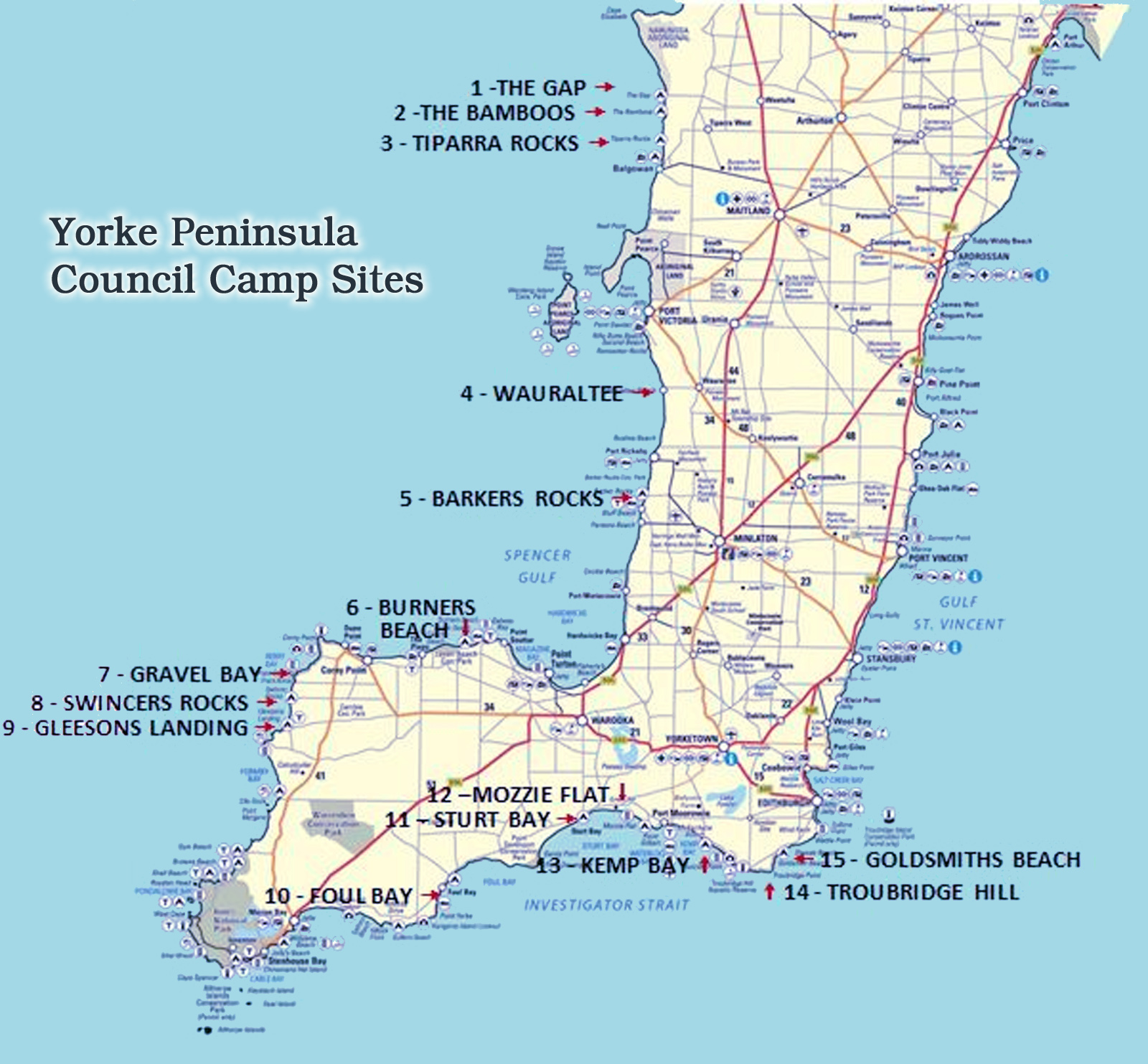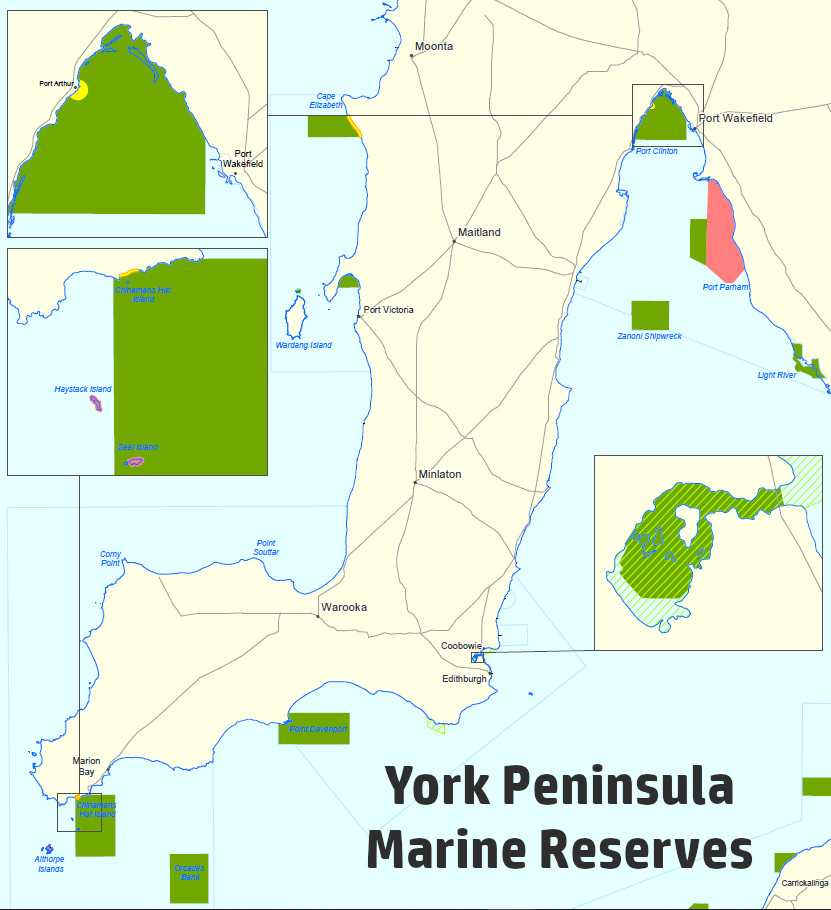


See Part Two of this article here.
Some great fishing can be had in the upper Gulf of St Vincent from Port Wakefield and south down the York Peninsula coast.
The mostly sandy shallows in the upper gulf have prolific seagrass meadows that are home to plenty of whiting, squid, flathead, gar and flounder, along with runs of blue crabs.
At the foot of the peninsula, places like Marion Bay have superb offshore fishing for samsonfish, kingfish, tuna and more.
Price
This community on the upper western Gulf of St Vincent has two creeks with mostly juvenile fish.
Launching by 2WD into Wills Creek is at high tide only if you don’t have 4WD.
Private (illegal) artificial reefs have been sunk in the upper gulf and these hold pink snapper in summer.
Ardrossan
This town is somewhat famous among fishos for its great fishing jetty, but it now also has a purpose-built “natural” artificial reef.
The 4ha reef is made of concrete reef balls, limestone, oyster shells and live native oysters.
Ardrossan has outstanding crabbing, along with squid, tommy ruff, gar and yellowfin whiting.
There are good all-tide boat launching facilities, and a hopper barge artificial reef 15km offshore holds snapper in summer.
Black Point
This holiday community is on a wide shallow bay, and being on the west side of the gulf the winds are offshore in summer.
The main catch in the shallow bay are yellowfin whiting, flathead, flounder, yellow-eye mullet, gar, squid and blue crabs.
There are snapper offshore, but finding ground, or someone’s private artificial reef, can be difficult.
Black Point launch site is exposed, and dries as the tide falls.
Nearby Port Julia has a small jetty that dries at low tide, and a basic launch site.
Squid are caught off the point at high tide, best in early mornings and late afternoons when the water is calm and clear.
Port Vincent
This small town has a marina that provides sheltered all-tide boat launching.
Unlike many gulf towns, there is no fishing jetty.
The attraction for boaters is Orontes Bank about 15km offshore, which produces king george whiting, gar, snapper and squid.
The whiting here are generally bigger than those in the far upper gulf.
There is a blue crab run in summer.
North Spit north of Port Vincent is a great low-tide location for blue crabs.
Garfish dabbing is best on a dark night (no moon).
Stansbury
The jetty produces king george whiting at the far end, and garfish, yellowfin whiting, tommy ruff, snook and squid.
There is a good summer run of blue crabs, usually raked around South Spit.
The boat ramp is excellent.
Along the coast north of Stansbury are excellent squidding grounds.
Wool Bay
There is a short jetty which produces mostly squid, gar and tommy ruff.
The launch site is poor and requires 4WD.
Port Giles
The long loading jetty here produced big snapper in years past.
Otherwise, tommy ruff, slimy mackerel, chow, trevally, squid and gar are the main catch.
The jetty is closed when grain is being loaded.
The rocks to the north are known to produce snapper, usually after a storm.
South of Port Giles, Salt Creek Bay at Coobowie has yellowfin whiting, mullet and flounder.
There is a tyre reef 3km off Giles Point.
Giles Tyre Reef approx 35 02.715S 137 47.483E
Edithburgh
The small jetty here punches above its weight, with tommy ruff, garfish, snook and squid. Night is best.
The boat ramp is adequate and king george whiting caught on nearby grounds are usually of a good size.
There is snapper and more at Troubridge Shoals, Tapley Shoal and Marion Reef for those with suitable boats.
Currents can be strong and fishing is best done at the turn of the tide.
Marion Bay
This large bay is under the “foot” of Yorke Peninsula near the entrance to Dhilba Guuranda-Innes National Park.
It is one of two places where boats can be launched along the bottom end of the peninsula, the other being Pondalowie Bay.
Marion Bay is not an ideal launch site however, being exposed, a single lane, poor at low tide and sometimes affected by weed.
A 4WD is needed to launch and retrieve.
There is a large marine sanctuary zone in this area but it includes a shore-based exclusion zone where fishing is permitted.
The long jetty fishes well for squid, gar, tommy ruff and mullet.
The beach within the bay is renowned for its autumn mullet run.
The worms found in the beached seaweed mounds are great bait for the mullet, but mince and cockle also works well.
Boaters who want to catch large king george whiting should launch here and go 25km east to Foul Bay.
Offshore grounds in this region produce huge whiting, samson, blue morwong, harlequin fish, yellowtail kingfish, trevally, snapper, nannygai, sharks and more.
Here is a list of recommended tackle for SA waters.
Here is the SA seasonal fishing calendar for various fish species.
Price tides
Ardrossan tides
Black Point tides
Port Vincent tides
Stansbury tides
Wool Bay tides
Port Giles tides
Edithburgh tides
Marion Bay tides
SA fishing regulations
SA marine parks
See Part Two of this article here.
Email corrections, additions, pictures or video here.


